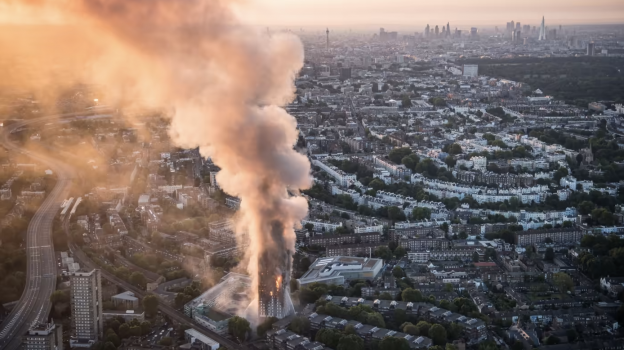The Grenfell Tower fire, which occurred on June 14, 2017, in West London, stands as one of the UK’s most tragic modern disasters, claiming 72 lives and leaving countless others affected. The fire’s rapid spread, attributed to flammable cladding on the exterior of the building, has prompted an extensive examination of building safety practices, emergency response protocols, and the social inequalities embedded within urban housing policies. From this devastating event, several critical lessons have emerged, reshaping the approach to building safety, community relations, and policy-making.
The Imperative of Building Safety and Compliance
One of the most glaring revelations from the Grenfell Tower tragedy was the failure in building safety standards and compliance. The use of combustible cladding material significantly contributed to the fire’s rapid spread. This has underscored the necessity of stringent adherence to building codes and safety standards, especially concerning fire safety. The lesson here is clear: safety and compliance cannot be compromised at any cost. Regulatory bodies must enforce strict safety standards, and building materials must undergo rigorous testing to ensure they meet fire safety requirements, and a consideration must be made for sprinkler tanks and sprinkler system installation.
The Role of Effective Communication and Resident Concerns
Residents of Grenfell Tower had raised multiple concerns about the building’s safety long before the tragedy occurred. However, these warnings went largely unheeded by the building’s management. This failure in communication and response highlights the critical importance of effective dialogue between residents and housing authorities. Residents’ concerns must be taken seriously, and a transparent, open channel of communication should exist to address safety issues promptly.
The Need for Efficient Emergency Response Protocols
The Grenfell fire also brought to light issues in the emergency response and the need for clear evacuation protocols for high-rise buildings. The “stay put” policy, which advised residents to remain in their flats in case of fire, proved catastrophic due to the unforeseen rapid spread of flames. This tragic outcome emphasizes the need for adaptable and efficient emergency response strategies that consider various scenarios, including the potential failure of containment measures. Training for emergency services must also include scenarios involving cladding fires to improve response effectiveness.
The Importance of Accountability and Transparency
In the aftermath of the fire, public scrutiny focused on the chain of decisions that led to the installation of flammable cladding, among other safety oversights. The ensuing inquiry revealed a complex web of responsibilities, from local authorities to the contractors and regulatory bodies. This situation has highlighted the need for accountability and transparency in decision-making processes, especially in projects that have significant safety implications. Moving forward, it is crucial that all decisions related to building safety are made openly, with clear records accessible for public scrutiny.
The Power of Community and Resilience
In the face of tragedy, the Grenfell community’s response was one of unity and resilience. The immediate aftermath saw an outpouring of support from the local community and beyond, with people offering shelter, donations, and emotional support to those affected. This response underscored the strength and solidarity of communities in times of crisis. It also highlighted the importance of community support systems and the need for authorities to foster and engage with these networks in both planning and emergency response.
Addressing Social Inequalities in Urban Housing
The Grenfell Tower fire cast a stark light on the broader issues of social inequality and housing policy in urban areas. Many of the building’s residents were from marginalized communities, raising critical questions about the standards of housing provided to low-income families. The tragedy has prompted a broader discussion on social housing policies, with a push towards ensuring that all residents, regardless of economic status, have access to safe and decent living conditions.
The Role of Continuous Learning and Policy Evolution
Finally, the Grenfell Tower fire has taught us the importance of continuous learning and the evolution of policies to prevent future tragedies. Building regulations, safety standards, and emergency protocols must be regularly reviewed and updated in response to new information, technologies, and materials. This iterative process is crucial in adapting to changing environments and ensuring that the lessons learned from past failures are integrated into future practices.
Grenfell Tower Fire Conclusion
The Grenfell Tower fire tragedy has left an indelible mark, serving as a stark reminder of the critical importance of building safety, community engagement, and social equity. The lessons learned from this disaster are multifaceted, touching on technical, social, and policy-related aspects. As we move forward, it is imperative that these lessons lead to tangible changes in how we design, manage, and inhabit our urban environments. By doing so, we honor the memory of those lost and ensure that such a tragedy is never repeated.


